Kingdom Fungi | Division Basidiomycota Rank Species | |
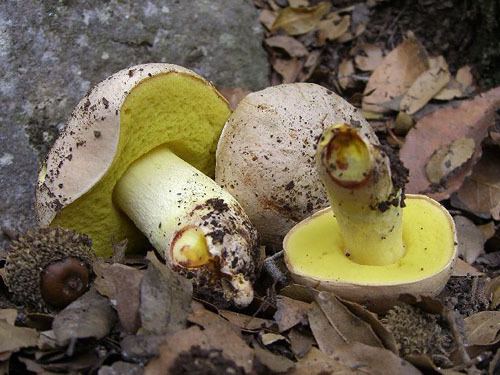 | ||
Similar Butyriboletus appendiculatus, Caloboletus radicans, Suillellus queletii, Butyriboletus fechtneri, Butyriboletus regius | ||
Hemileccinum impolitum, is a basidiomycete fungus of the family Boletaceae, that has tubes and pores instead of gills. These pores can be seen under the cap as tiny holes. It is edible, but an occasional fruiter, often going many years between fruitings and is therefore not commonly found. It grows beneath Quercus (oak) trees. It is commonly called the iodine bolete, because of its smell when cut.
Contents

Taxonomy
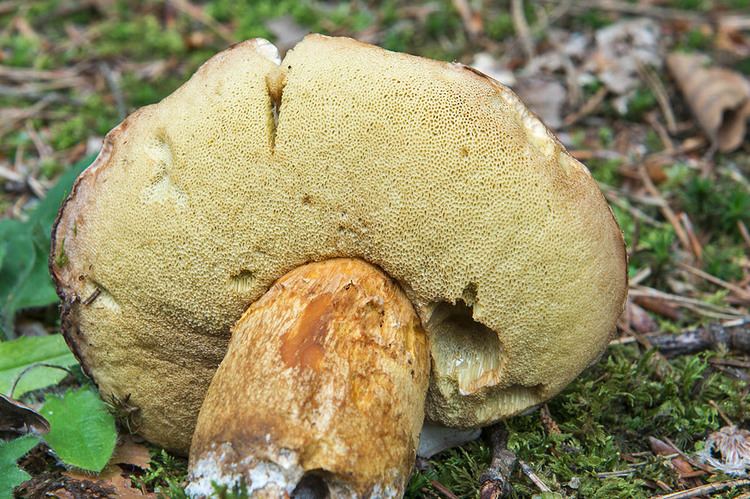
Impolitum is Latin, meaning "unpolished", "matt", "unsmoothed", or "unfinished", and may be a reference to the hammered look of some specimens. It was first described as Boletus impolitus by Elias Magnus Fries, an eminent mycologist of the 19th century. In 2008, Josef Šutara transferred it to the new genus Hemileccinum based on morphological features. In 2014, Wu et al. confirmed that H. impolitum does not belong in Boletus, Xerocomus or Leccinum in a molecular phylogenetic study.
Description
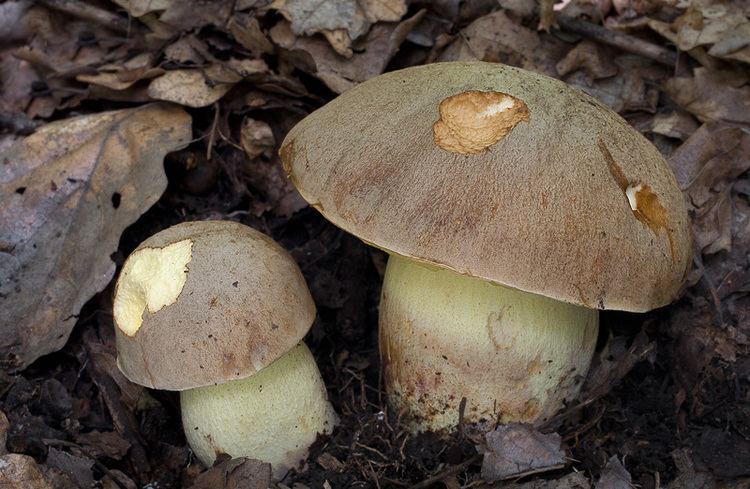
The cap is at first hemispherical, but flattens with age, and is sometimes upturned when mature. It is pale brown, light tan, or tawny, often with a pale grey hoariness initially. It often has a 'hammered' look. The cap diameter usually ranges between 5 and 12 cm (2 and 4.5 in), but can reach up to 20 cm (8 in). The stem is 5 to 15 cm (2 to 6 in) high, and is slightly fatter at the base. It is pale yellow, and often has a red flush. It has no network (reticulation), but sometimes has reddish dots. The pores and tubes are pale yellow, with the pores being small and round, and they do 'not' bruise blue. The flesh is pale yellow, and remains the same colour when cut. It is soft and has a sour smell somewhat like iodine in the base. The spore print is olivaceous walnut-brown.
Similar species
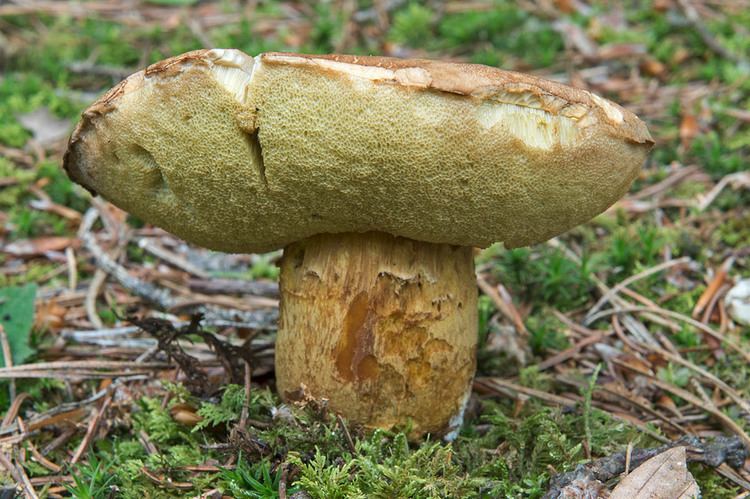
Distribution and habitat
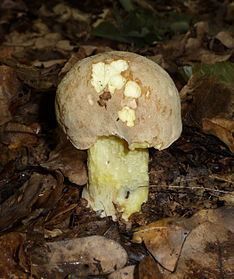
This species is mycorrhizal with oak (Quercus), and occasional, mainly being found in Southern England, although finds in other parts of the country have also been recorded. In mainland Europe it is found with oaks and hornbeams (Carpinus) on chalky soils, and has been found under pines (Pinus) . In England, it can appear in two or three flushes from June till September, depending on weather conditions.
Edibility
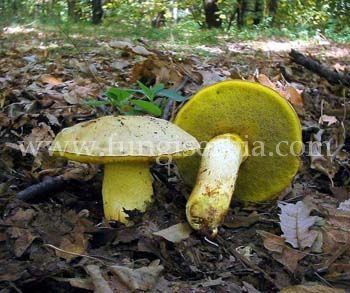
Boletus impolitus is typically considered inedible due to its bland taste. Some report it as mild and having a good texture. Care and discretion should be exercised when harvesting this mushroom in the interests of conservation.
